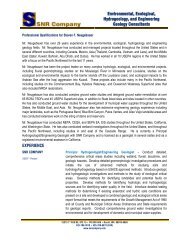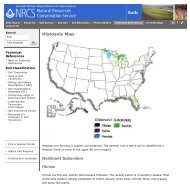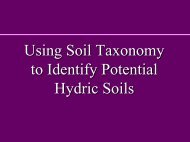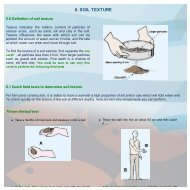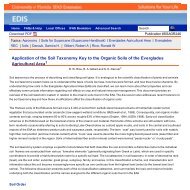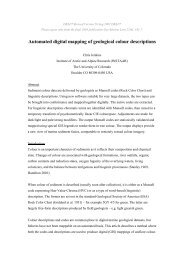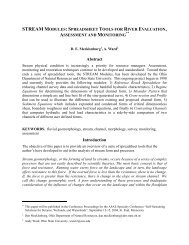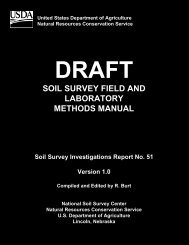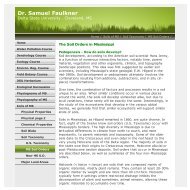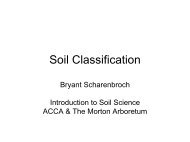chapter 3 fundamentals of fluvial geomorphology and stream ...
chapter 3 fundamentals of fluvial geomorphology and stream ...
chapter 3 fundamentals of fluvial geomorphology and stream ...
Create successful ePaper yourself
Turn your PDF publications into a flip-book with our unique Google optimized e-Paper software.
<strong>and</strong> slope <strong>of</strong> the reach are not significantly altered. However, itshould be kept in mind that the <strong>stream</strong> may respond to stabilization<strong>of</strong> one bend through accelerated morphological activity in adjacentfree bends. Hence, care must be taken to ensure thatmanagement <strong>of</strong> local instability at one location does not transfer orconcentrate this natural process elsewhere in a way that isdetrimental to the dynamic stability <strong>of</strong> the system.The causes <strong>of</strong> local instability are not limited to the <strong>stream</strong>.This type <strong>of</strong> instability can also be triggered by activities insurrounding riparian <strong>and</strong> floodplain areas. For example, a reach <strong>of</strong><strong>stream</strong> may display local <strong>stream</strong> widening due to trampling <strong>and</strong>over-grazing by cattle, while up<strong>stream</strong> <strong>and</strong> down<strong>stream</strong> reachesthat are not directly affected <strong>and</strong> are to maintain dynamicallystable. In this situation, a local management solution, based onrestricting access by fencing, construction <strong>of</strong> suitably reinforcedaccess ramps at water points, <strong>and</strong> reinstatement <strong>of</strong> the regimewidth are all that are needed to alleviate a site-specific problem.Site-specific instability problems may respond satisfactorily todesign alternatives developed using reference reach techniques.In practice, however, it is not always easy to establishwhether a local instability problem results from <strong>and</strong> is amenable toa local solution, or is symptomatic <strong>of</strong> more serious, system-scaleimpacts <strong>and</strong> adjustments. Even if the engineer suspects that localinstability results from adjustments <strong>of</strong> the <strong>fluvial</strong> system to <strong>stream</strong>instability, human activities, or watershed l<strong>and</strong>-use changes, theymay lack the authority or resources to address <strong>of</strong>f-site <strong>and</strong> nonpointcauses. Under these circumstances, the engineer may haveto modify the adopted solution by constructing a local structurewith the capability for it to continue functioning successfully evenwhen system-driven <strong>stream</strong> adjustments have significantly alteredlocal conditions. For example, local bank stabilization may berequired at the outside <strong>of</strong> a migrating bend on a river that ispredicted to degrade in the future due to system instabilitydown<strong>stream</strong>. Ideally, the system-scale problem (degradation)should be addressed directly using one or more grade controlstructures, but this may be institutionally or financially unfeasible.Recognition that the problem is not entirely local is nonetheless stillvaluable, as it allows the engineer to determine the degree <strong>of</strong>additional toe scour protection necessary to ensure that the bankprotection measures can withst<strong>and</strong> the additional bed loweringassociated with degradation during the design life <strong>of</strong> the project.3.7.4 System InstabilityAdjustments involved in system instability typically involveaggradation (increasing bed elevation), degradation (decreasingbed elevation), or planform metamorphosis (abrupt alterationfrom one planform pattern to another). The response <strong>of</strong> an alluvial48 Fundamentals <strong>of</strong> Fluvial Geomorphology <strong>and</strong> Stream Processes



